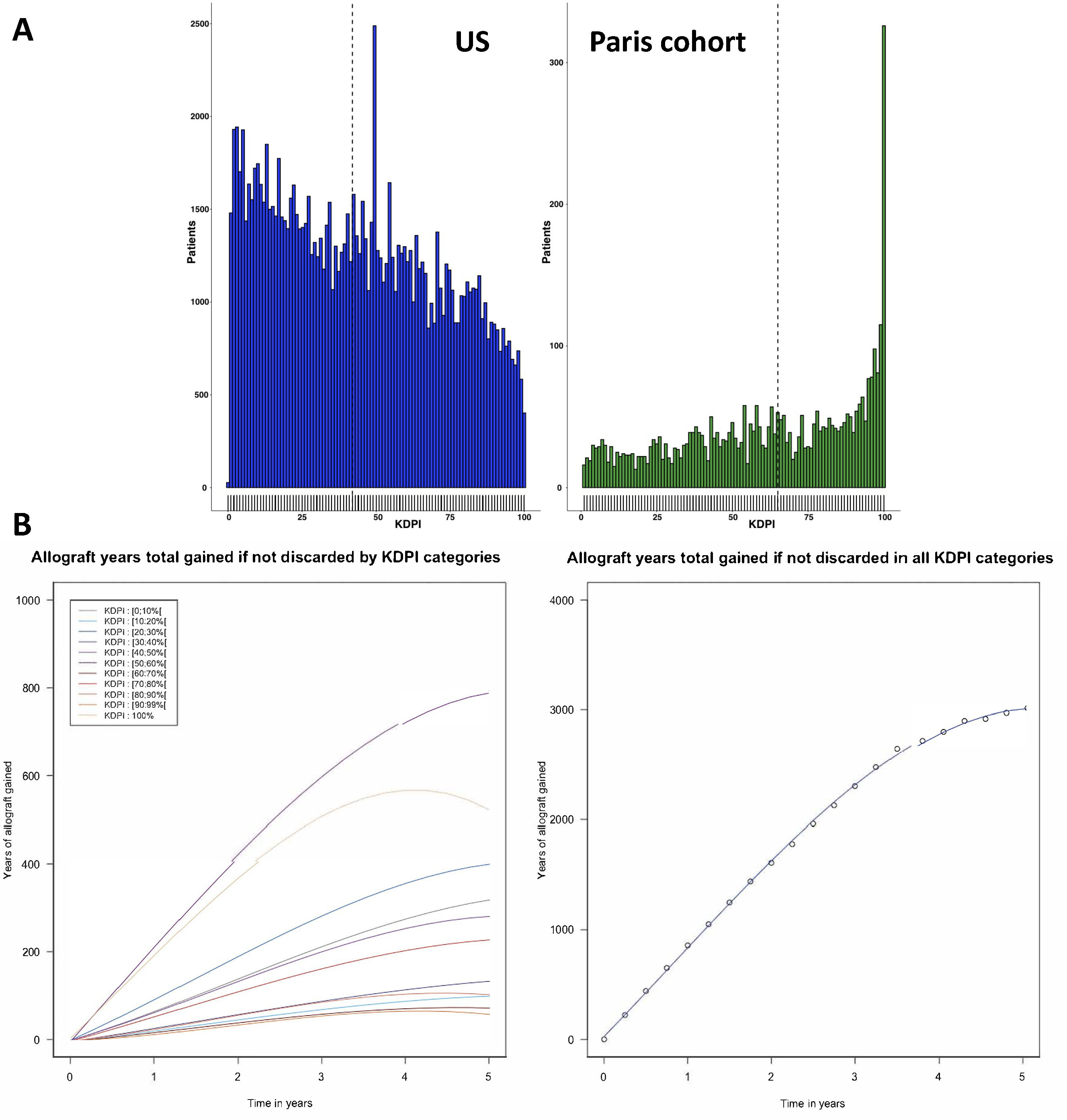
Exploring the Viability of Kidneys Discarded in the US: A Comparison of Kidney Utilization Patterns and Outcomes in the US and France
Olivier Aubert1, Peter P Reese1, Marc Raynaud1, Denis Viglietti1, Charlotte Loheac1, Nassim Kamar1, MIchel Delahousse1, Carmen Lefaucheur1, Alexandre Loupy1.
1Paris Translational Center for Organ Transplantation, Paris, France
Introduction: Approximately 2,000 donated kidneys are discarded in the US each year. Some transplant leaders have questioned the viability of these lost organs, while others suggest instead that allocation inefficiencies or risk-aversion due to center report cards are responsible for the high discard rates. However, few studies have examined whether kidneys discarded in the US might be transplanted with acceptable outcomes in other countries.
Materials and Methods: Using UNOS registry and the Paris Transplant Group prospective cohort data from 2004 – 2014, we compared kidney quality and outcomes between the US and France.
Results: During this period, 125,936 kidneys in the US and 4,287 kidneys in the Paris Transplant Group cohort were procured for transplant. As shown in the upper panel (Panel A), a much higher proportion of transplanted French kidneys were higher-risk organs (as measured by the kidney donor profile index, KDPI) compared to the US (median 65 [39-90] vs 42 [19-67] in the US, p<0.0001). During the decade, the KDPI of US kidneys only increased modestly (from a mean KDPI of 42 to 44), while in France, a steadily rising KDPI (from a mean KDPI of 54 to 67) reflected a trend of more aggressive organ use. We used the Kaplan-Meier method to estimate death-censored graft survival for higher-KDPI kidneys transplanted in France. Three and five-year survival for KDPI 80 – 90 kidneys was 88 and 83%, for KDPI 91-99 kidneys was 83 and 79% and for KDPI 100 was 81 and 78%. Finally, we fit a logistic regression model to predict kidney discard in the US (AUC 0.80) and estimated the probability that kidneys transplanted in France would have been discarded if instead allocated in the US. Many transplanted French kidneys would have had a high probability of discard in the US system. Using 951 transplanted kidneys in France randomly selected according to their probability of being discarded in the US, we calculated that the use of those kidneys in the US would have translated to a 3,000 allograft life-years saved (Panel B).
Conclusion: In summary, these results provide fresh evidence that some kidneys discarded in the US are a lost opportunity that could have benefitted some wait-listed patients.

